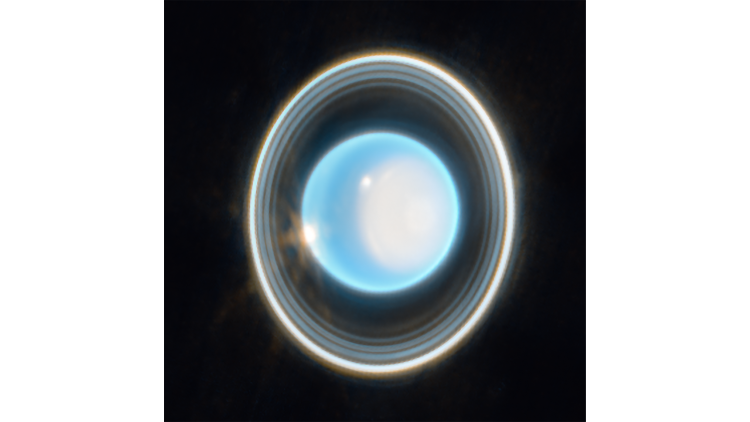What methods can be employed to send a spacecraft to Uranus despite the former's immense distance from Earth? This is what a recent study presented at the56^th^Lunar and Planetary Science Conferencehopes to address as a team of scientists investigated ways to cut the travel time to the second most distant planet from the Sun. This study has the potential to help scientists, engineers, and mission planners develop low-cost and novel techniques for deep space travel while conducting cutting-edge science.
For the study, the researchers evaluated how NASA's planned Uranus Orbiter and Probe (UOP) mission, which is currently slated to launch no earlier than 2031, could reach Uranus using today's technology and launching at any year. The reason this is vital is because the current UOP mission plan calls for the spacecraft to perform a gravity assist no earlier than 2035 while arriving at Uranus no earlier than 2044. However, the authors note that budget reasons could cause havoc with this mission plan by pushing back the launch date, hence the study arguing for a more flexible launch timetable.
The study first discusses the challenges of sending a spacecraft to Uranus compared to Jupiter and Saturn, which have had several spacecraft study their worlds while Voyager 2 remains the only spacecraft to visit Uranus. These challenges include the distance, as while the distance from Earth to Jupiter and Saturn is 444 million miles and 957 million miles, respectively, the distance from Earth to Uranus is 1.9 billion miles, or more than twice the distance to Saturn and almost five times the distance to Jupiter. Aside from the distance, the researchers note the physical and geological difficulties of sending a spacecraft to Uranus, including its rings being different from Saturn and Uranus' sideways axial tilt.
Regarding how UOP could get to Uranus, the study discusses how reaching Uranus is feasible with today's technology, including chemical propulsion, super-heavy lift launch vehicles, and solar electric propulsion. The study emphasizes that a combination of these attributes could enable an arrival at Uranus from Earth in less than 14 years while delivering more than 4,000 kilograms (8,800 pounds). For context, NASA's Voyager 2, which as noted is the only spacecraft to have visited Uranus, had an estimated launch mass of 722 kilograms (1,600 pounds).
The study concludes by stating, "The Uranus Orbiter and Probe concept offers compelling science and an inspiring journey. Uranus is a much more challenging target than Jupiter or Saturn. However, our team has identified low-risk, modest-cost approaches to achieve UOP's science goals within the current funding environment."
The study briefly mentions Uranus' moons regarding the difficulty in exploring them due to Uranus' orbit and its moons' orbits being tilted on their side. However, Uranus' moons, which total 28 confirmed, could provide key scientific insights into planetary formation and evolution and their habitability potential, as several of Uranus' largest moons show evidence for having subsurface oceans either presently or long ago. The five largest moons of Uranus from largest to smallest are Titania, Oberon, Ariel, Umbriel, and Miranda, with all except Miranda displaying evidence of ocean layers based on computer models.
While Voyager 2 remains the only spacecraft to visit Uranus, which occurred in January 1986, that brief flyby continues to provide scientists with data used to this day, including recently comparing cryovolcanism on the dwarf planet Ceres to potential cryovolcanism on Umbriel and Oberon. Therefore, if almost 40-year-old data is being used to help scientists better understand Uranus and its moons, then a future mission like UOP could provide even greater insights into whether these moons could have subsurface oceans, along with life as we know it.
What new methods will enable faster travel to Uranus in the coming years and decades? Only time will tell, and this is why we science!
As always, keep doing science & keep looking up!
 Universe Today
Universe Today
